<> Troides helena Linnaeus, 1758 <>
the Common Birdwing ผีเสื้อถุงทองป่าสูง
Click on any photo to see all photos full size in Lightbox
Additions and corrections to the information provided on this page is always welcome. Please use the Contact form.
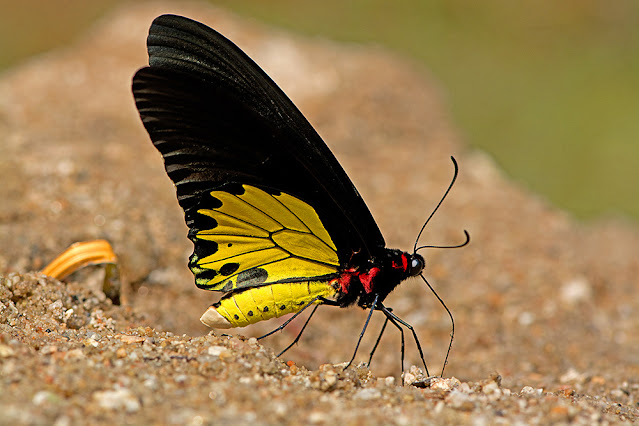
Photo taken at Doi Suthep-Pui National Park, Chiang Mai, Thailand ♂ 400m a.s.l.

Troides helena is quite common and is found in all countries across the South-East Asia region with the exception of Taiwan and the Philippines. Like other Troides species they have a fairly unique flight technique and it is easy to see how they get their common names of 'Birdwing'. The large forewings are flapped rapidly to provide propulsion, whilst the hindwings are kept quite still, thereby resembling the flight of a bird. The colours of Troides helena are aposematic, i.e. a warning signal to potential predators that they are poisonous or at the very least distasteful. This derives from the larvae which feed exclusively on several species of Aristolochia, climbing vines containing toxic aristolochic acids. They are very strong fliers and can fly quite high.
The species is most active in the mornings and is multivoltine with several broods per annum. The adult female can evidently locate the correct host plants with chemical receptors on her forelegs. This allows her to “taste” the leaves and to pick the ones that she thinks are most suitable for the development of her offspring. She lays up to 25 eggs singly on the leaf surface, underside, or stem of the host plant. All the larval instars have an orange osmeterium (a defensive organ), which is usually hidden but can be everted when the larva feels threatened.
Synonyms: Papilio helena, Papilio pompeus, Papilio astenous, Ornithoptera helena, Troides ferrari
Taxonomy: Animalia - Arthropoda - Insecta - Lepidoptera - Papilionidae - Papilioninae - Troides - helena
Regional subspecies: Troides helena cerberus (NE India, Bhutan, Bangladesh, Myanmar, Thaialnd, Laos, Cambodia, Vietnam, China, Malaysia, Singapore), Troides helena helena (Indonesia), Troides helena hephaestus (Indonesia). A large number of other subspecies have been listed by various authors, especially amongst the islands of Indonesia but further study is probably needed.
Regional Distribution: India, Nepal, Bhutan, Bangladesh, Myanmar, Thailand, Laos, Cambodia, Vietnam, S.China, Malaysia, Singapore, Indonesia
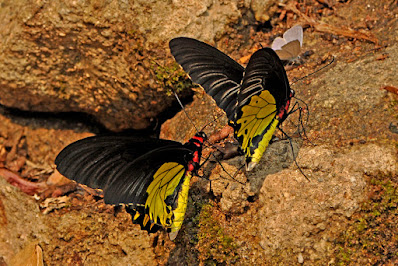 |
| Lamnamkok National Park, Chiang Rai, Thailand 450m a.s.l. |
Habitat: Troides helena is usually found in evergreen and deciduous montane and lowland forest, sometimes including bamboo forest. Although basically a forest species it is sometimes seen in urban parks and gardens. It has been recorded in habitats up to 2200m a.s.l. in the Himalayas.
Flight time: all year depending on location Wingspan: 120-170mm
Life History: egg 6 days instar 1 2-3 days instar 2 2-3 days instar 3 2-3 days instar 4 4 days instar 5 5 days pupa 20 days Total egg to adult 41-44 days
All times are approximate and can vary depending on the season and on the host used.
Larval Hosts: Aristolochia acuminata (syn. Aristolochia tagala), Aristolochia fordiana, Aristolochia foveolata, Aristolochia indica, Aristolochia kaempferi, Thottea parviflora, Thottea siliquosa, Thottea tomentosa (Aristolochiaceae).
Actual host plant used depends upon location and availabilty of plant species.
Adult Food Sources: Nectar - Clerodendrum paniculatum, Premna serratifolia (Lamiaceae), Lantana camara (Verbenaceae), Muntingia calabura (Malvaceae), Ixora javanica, Ixora coccinea, Ixora paludosa, Mussaenda frondosa, Mussaenda philippica (Rubiaceae), Bauhinia galpinii, Caesalpinia pulcherrima (Fabaceae), Alstonia scholaris, Amsonia sp. (Apocynaceae), Spathodea campanulata (Bignoniaceae), Callistephus chinensis (Asteraceae), Hibiscus rosa-sinensis (Malvaceae). Other - mud puddling
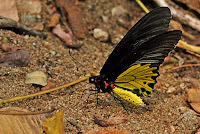 |
| Lamnamkok National Park, Chiang Rai, Thailand ♂ |
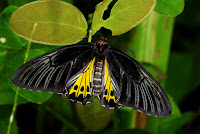 |
| Lamnamkok National Park, Chiang Rai, Thailand ♀ |
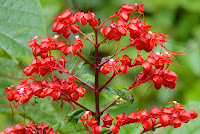 |
| Clerodendrum paniculatum, a nectar source |
 |
| Hibiscus rosa-sinensis, another nectar source |
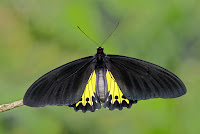 |
| Chiang Dao Nature Sanctuary, Chiang Mai, Thailand |
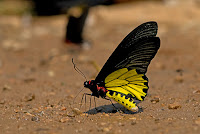 |
| Chiang Dao Nature Sanctuary, Chiang Mai, Thailand ♂ |
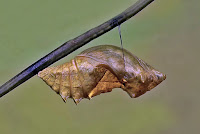 |
| pupa nearing eclosure |
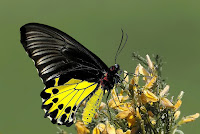 |
| Tad Thong Waterfall, Luang Prabang, Laos ♀ |
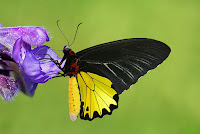 |
| Lamnamkok National Park, Chiang Rai, Thailand ♂ |
 |
| Aristolochia acuminata, a larval host |
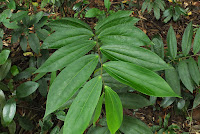 |
| Thottea siliquosa, another larval host |
Links to other pages in this series for species in the same subfamily
Graphium nomius
Papilio agenor
Papilio helenus
Troides helena
